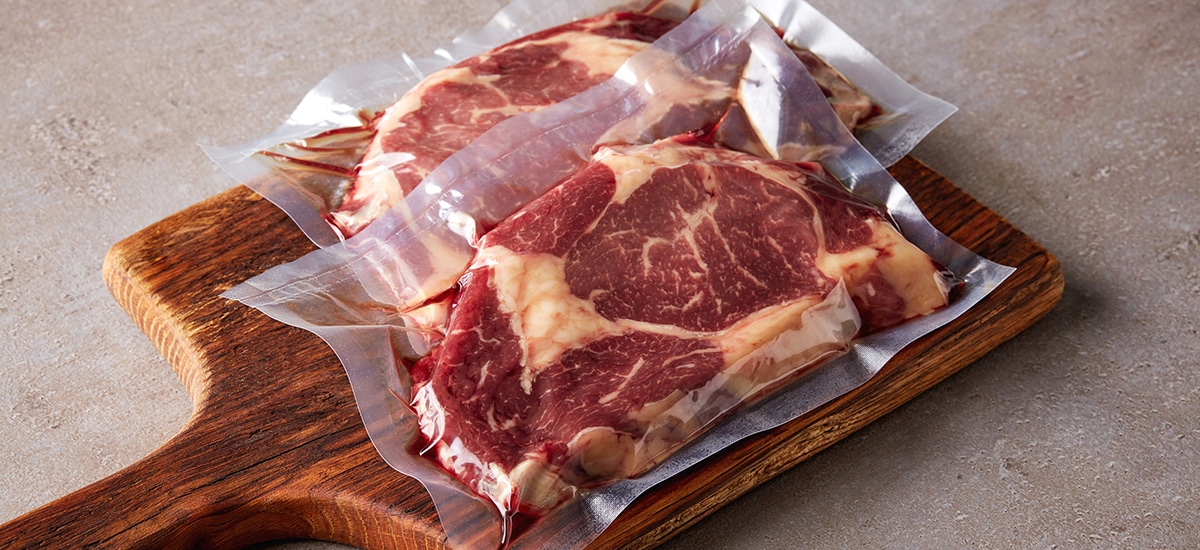
Consumer opinion - should supermarkets ditch vacuum packaged meat?
An article on news.com.au, readers were surveyed as to whether they thought that Coles should ditch the vacuum packaging. The results were that 70% of people, out of over 20,000 voters, thought that Coles should remove their vacuum packaging.
This packaging increases the tenderness of the beef …
However, end-consumers may not necessarily understand the whole picture, or the reason behind why vacuum packaging may be necessary.
A spokesman from Coles explained their dilemma:
“Coles has used vacuum-sealed packaging for our popular Coles Finest and Graze fresh meat ranges for the past five years,” they said. “This packaging increases the tenderness of the beef and lamb, which improves the eating quality.”
The fact is, vacuum packaging of this kind actually serves an extremely practical purpose, as the oxygen barrier properties of this type of packaging keeps meat fresher for far longer. Mould and bacteria cannot grow without oxygen. In Fact, vacuum sealing ingredients can extend their shelf life by around three to five times, although the exact shelf life will obviously vary depending on where it is being stored and the ingredient itself.
Without vacuum packaging, you would create a different, and probably worse, waste issue.
Meat would have a far shorter shelf life, giving it much less chance of being bought. This would result in far more meat being thrown out, contributing to an already serious food waste issue. According to OzHarvest, at present, in Australia one in five shopping bags end up in the bin, equaling $3,800 worth of groceries per household each year.
However, because customers don’t understand this issue, many of them simply prefer convenience or easy recyclability against these less tangible benefits. So, as providers of packaging solutions, we need to start thinking of ways to satisfy our customer’s needs, without compromising on the benefits vacuum packaging provides.
Without vacuum packaging, you would create a different, and probably worse, waste issue.
This could include, as one respondent suggested, customising the package to be more ergonomic and convenience-focused. This could include using a more easily peelable material, or incorporating a pull tab or cardboard elements.
Or, the type of packaging used may need to change. The flow wrap film method used to create this box isn’t the only type of packaging available that uses a vacuum and oxygen barrier. A barrier bag that shrinks around the product could be used, as one example.
Packaging is a continuously innovative industry, and evolving to meet the changing demands of customers while keeping the products functional is one of its core roles.
Product packaging is important – it’s a customer’s first impression of a product, as well as its protection.
So, when challenges like this occur, where a packaging design is not well liked by the end consumer, it’s important that packaging providers are able to meet these challenges, without compromising the key role food packaging must play in ensuring food safety and freshness.
Equipping the food industry to grow with food processing and packaging solutions
call 1300 88 99 51
email [email protected]
room 35 Shirley Way, Epping VIC 3076
room 9 Mcilwraith St, Wetherill Park NSW 2164
room 21 Hoyle Rd, Hope Valley WA 6165
room 27 Beal Street, Meadowbrook QLD 4131
room 7 Chadderton Bvd, Epping VIC 3076
room 22 Glassford Rd, Kewdale WA 6105
room 25 Hayton Road, Wigram, Christchurch 8042, NZ
Connect with us on LinkedIn
